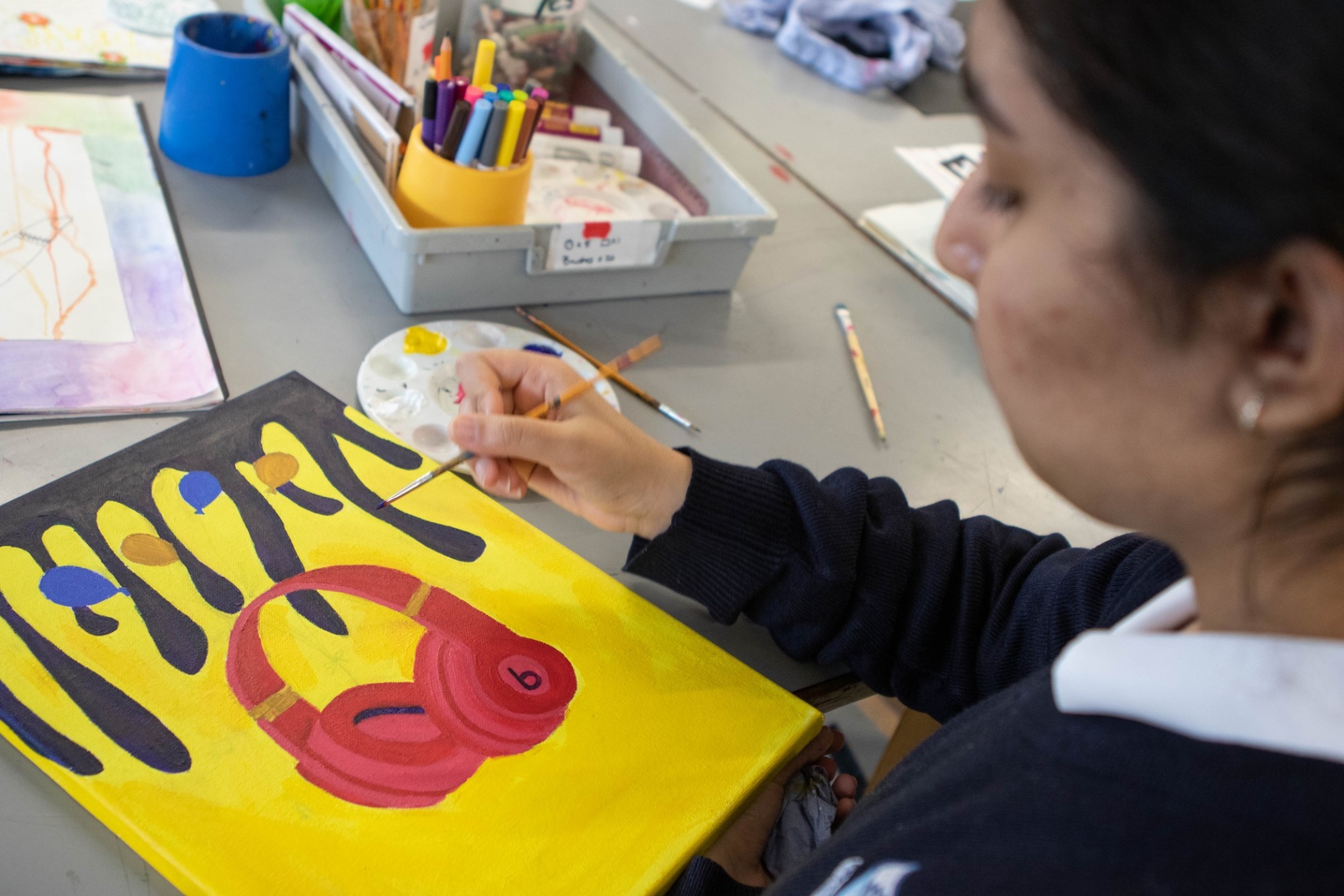Art

Art
Subject Leader: Ms Karen De Witt
Art and Design curriculum is essential to the cultural well-being of our students. Through the observation and exploration of the visual, they can gain a greater understanding of the world that they live in. Students are enabled to become independent learners through an engaging and challenging curriculum which aims to equip students with the knowledge to develop their creative ability. The chance for students to express themselves creatively is highly valued and encourages our students to become resourceful, innovative and creative adults. We support our students to aspire through their learning experiences to standards of excellence intellectually, practically and aesthetically.
By the end of Key Stage 3, students should be able:
- To prepare students to apply their knowledge and understand of creative arts, through a range of skills, processes and techniques.
- To become proficient in drawing, painting, sculpture and other art, craft and design techniques.
- To use the language of art, craft and design and extent students’ knowledge about artists, crafts makers and designers.
By the end of Key Stage 4, students should be able:
- To provide a balanced curriculum, so students have the opportunity to apply their knowledge, skills and understanding in the context of future development.
- To encourage personal development through practical participation in a range of art and design disciplines,
- To encourage students to develop their people, communication, planning and team working skills.
Year 7 and 8
Content
Each Year group will explore and create work in response to certain themes.
- Year 7 will explore the theme ‘Application of principles’ and ‘History through Art’ and ‘Cultural influence’.
- Year 8 will explore the theme ‘Day of the Dead’, ‘Identity and expressionism’.
Each scheme of work is centred around the development of the basic art skills of the pupil; essentially their control and understanding of the key elements of art which are:
- line
- tone
- texture
- colour
- shape
- form
- pattern
- space
Contextual research and the analysis of relevant artists’ work is taught to prepare pupils for their GCSE studies.
Assessment
Each project is assessed through the sketchbook work and each final outcome. Skills are assessed at different review points and pupils review their work and set personal targets for improvement.
Homework
An independent learning project is set based on the term’s theme, focusing on the techniques and processes covered during lessons.
How Parents and Carers Can Support
- Encourage your child to look at art from western and non-western cultures
- Assistance with library and Internet use for research
- Encourage them to attend Art Catch up sessions
- Encourage your child to ask teachers for help if there are any difficulties
- Please ensure that homework is completed on time
Reading List
The following resources should be seen as a guide to some of the materials that pupils might find useful:
- Famous Artists - Usborne Art Books
- Edexcel GCSE Art and Design: Student Handbook
- www.vam.ac.uk/
- www.bbc.co.uk/gcsebitesize
- www.tate.org.uk/
Year 9, 10 and 11
Exam Board and syllabus code
Edexcel (Fine Art)
Content
The Art and Design course enables candidates to make a personal response to their own experiences, environment and culture in both their practical and theoretical studies. It also provides opportunities to develop skills and understanding through practical experience of the role, purpose and function of art in society.
In Component 1 and Component 2 students are required to work in one or more area(s) of fine art, such as those listed
below:
- drawing
- painting
- sculpture
- installation
- printmaking
- mixed media
- land art
They may explore overlapping areas and combinations of areas.
Skills
Within the context of fine art, students must demonstrate the ability to:
- use fine art techniques and processes, appropriate to students’ personal intentions, for example:
- mark-making
- monoprint, collagraph and block printing
- assemblage
- construction
- carving
- digital working methods
- use media and materials, as appropriate to students’ personal intentions, for example:
- charcoal, pastels, pen and ink, crayons and pencil
- watercolour, gouache, acrylic and oil paint
- fund materials
- clay, wood and metal
- digital imagery
- different papers and surfaces on which to work
